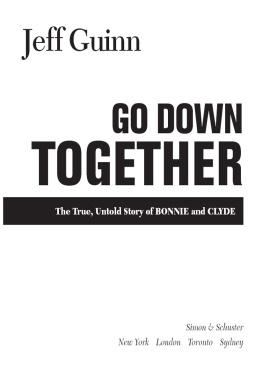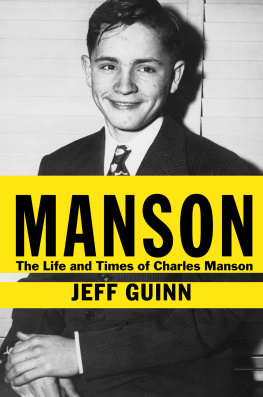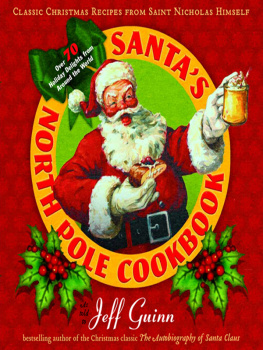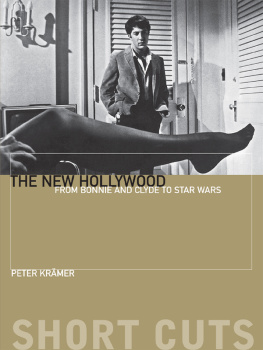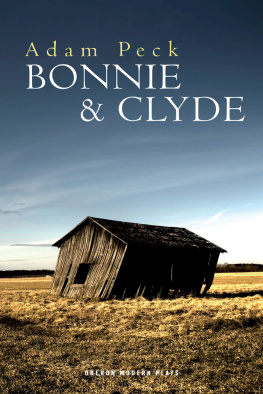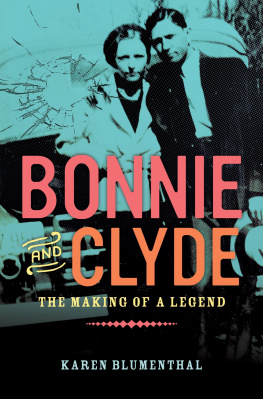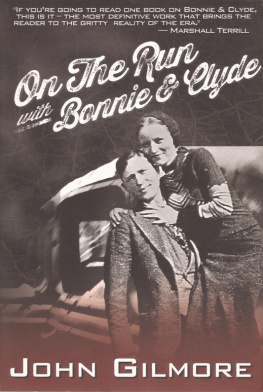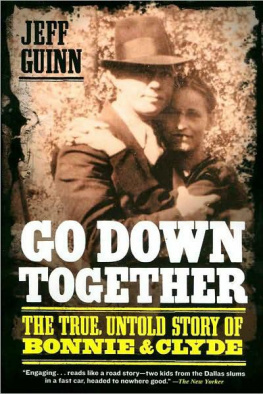Jeff Guinn is the best-selling author of numerous books of fiction and nonfiction. An award-winning investigative journalist and former books editor, he is a frequent guest on national radio and television programs. Guinn lives in Fort Worth, Texas.
Note on Sources
T here is a great deal of disagreement about many dates and events in the lives of Clyde Barrow and Bonnie Parker, including the year in which Clyde was born and whether Bonnie really smoked cigars (1910, probably; and she didnt, definitely). Some of this stems from the lack of public records kept in the small towns where they were born and in the slum where they grew up. Media accounts of their crime spree include all sorts of exaggerated or downright false claims about what they did and when. The problem is exacerbated by many books about them that rely too heavily on these inaccurate news reports, or else on interviews with people who claimed far more intimate relationships with the Barrow Gang than they actually possessed.
Fugitives: The Inside Story of Clyde Barrow and Bonnie Parker was published just months after their deaths in 1934. Editor Jan Fortune interviewed Nell Barrow, Clydes sister, and Emma Parker, Bonnies mother, for the book, and presented them as addressing readers in the first person. Both the Barrow and Parker families were appalled by the result; they claimed Fortune made up much of the text, mostly in the sections devoted to Clydes and Bonnies criminal careers. But because it was the first, and because it claimed to come right from the lips of family members, Fugitives was accepted as gospel by much of the general public.
In 1979, former Dallas County deputy Ted Hintons memoir Ambush was published some time after his death. He had been the last surviving member of the six-man posse that ambushed Clyde and Bonnie on a back highway outside Gibsland, Louisiana, in 1934, and swore his book told the only true, complete story. That does not seem to be the case; one friend of Hintons said Ted never told the story the same way twice. Few Barrow-storiansexcept Hintons loyal son Bootsaccept Teds version of the ambush, which has the posse squatting on a mosquito-infested hill for two nights rather than part of one.
The only other relatives book ever published came in 2003, when Clydes youngest sister, Marie Barrow Scoma, coauthored The Family Story of Bonnie and Clyde with Arkansas historian Phillip Steele. Marie died soon after the pair began work on the book, and afterward Steele relied heavily on information from Shawn Scoma, Maries adopted son, who was subsequently caught trying to sell forged Bonnie and Clyde memorabilia and is currently in prison for second-degree murder. A new generation of professional and amateur Bonnie and Clyde scholars found the book to be rife with errors, mostly caused by Marie completely overlooking or drastically altering instances in Clydes life that might make her beloved older brother look bad.
Since then, there have been a few works of solid Barrow Gang scholarship published, all of which are helpful in putting together an objective, plausible delineation of what really happened during the short, violent lives of Clyde and Bonnie. These include James R. Knight and Jonathan Daviss Bonnie and Clyde: A Twenty-first Century Update , published in 2000 by Eakin Press; On the Trail of Bonnie and Clyde Then and Now , Winston G. Ramseys exhaustive travelogue along every back road the outlaw couple traveled, published by After the Battle Press in 2003; John Neal Phillipss well-researched Running with Bonnie and Clyde: The Ten Fast Years of Ralph Fults , published by the University of Oklahoma Press in 1996 and offering readers for the first time a glimpse of Clyde and Bonnie through the eyes of one of their criminal cohorts; and in 2004 the posthumous My Life with Bonnie and Clyde by Blanche Caldwell Barrow (also from the University of Oklahoma Press), a diary discovered and edited by John Neal Phillips after Buck Barrows widow died in 1988. Blanches apparent purpose was to present herself as a martyr, but she was present during crucial events and her eyewitness accounts are invaluable. In working on these books, Phillips and Davis variously had the inestimable advantage of friendships with Marie Barrow Scoma, Buddy Barrow Williams (L. C. Barrows stepson), Rhea Leen Linder (Bonnie Parkers niece), and Blanche Caldwell Barrow, as well as Ralph Fults and several other Barrow Gang intimates. (Buddy and Rhea Leen are still living, and have cooperated completely on this book.) In all my own lengthy research, I never found any of these four books to have exaggerated or misrepresented the smallest detail, though in some cases those interviewed and the authors themselves honestly disagree about where, how, and when some things happened. I have particularly relied on those booksand on interviews with Davis, Phillips, Linder, and Buddy Barrow Williamsin compiling Go Down Together .
But throughout my own book, particularly in early chapters dealing with the Barrow familys unsuccessful struggle to survive on country farms and subsequent move to West Dallas, I had the additional advantage of working from two other revealing, unpublished manuscripts. After the publication of Fugitives , which she had declined to work on with Jan Fortune, Cumie Barrow, Clydes mother, attempted to write her own memoir. She never finished after making several false starts, and the resulting pages jump erratically from one time frame to the next. There are, essentially, three versions, one in which Cumie names names, a second in which she protects some identities, and another written in the third rather than first person. There are few even remotely sequential page numbers, making it impossible in my prologue and chapter notes to cite specific pages. I could number them myself, but there is no way of knowing what Cumie wrote first, or in what order she intended her memoir sections to be read. But throughout, hers is unmistakably the voice of a mother who loved her children, regretted their mistakes and deaths, and endured her sorrow through a profound, fundamentalist Christian faith. The manuscript was furnished to me for use in this project by Buddy Barrow Williams.
Then Jonathan Davis offered an additional prize. Before he coauthored his book with historian James Knight, and before Marie Barrow Scoma had her brief collaboration with Phillip Steele, Jonathan and Marie had spent two years working on a memoir by Marie that, when completed, she angrily rejected as having too many negative stories about her family. Jonathan painstakingly researched everything Marie claimed, and felt the two had produced an accurate portrait of a family that made more than its share of mistakes but never stopped being loyal to one another. Compared to the later Family Story of Bonnie and Clyde , the unpublished manuscript is 100 proof whiskey rather than watered-down beer. Here we have Clyde Barrow and Bonnie Parker describing in detail to their families some of the most notorious incidents in their careersthe Easter Sunday murders of two Texas highway patrolmen; the Dexfield Park shootout where Buck and Blanche Barrow had to be left behind; the Eastham Prison Farm raid that was reportedly masterminded by Clyde, but wasnt. Its simply amazing material, and some of it has never been made public before. Jonathan later supplied the leadsBarrow Gang enthusiast-historian Terry Whitehead of Blackwell, Oklahoma, also made invaluable contributionsto information that may untangle the most persistent mystery remaining in the saga of Bonnie and Clyde: How, exactly, could Texas Ranger Frank Hamer be so certain they would drive by the ambush spot at or around 9 A.M. on Wednesday, May 23, in 1934?

